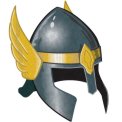
player
DefineFontInfo
A DefineFontInfo tag will be used to complete the definition of a DefineFont tag. It uses the exact same identifier (f_font_info_id_ref = f_font_id). You must have the corresponding font definition appearing before the DefineFontInfo since it will use the number of glyphs defined in the DefineFont to know the size of the map definition in the DefineFontInfo tag.
When it looks like it perfectly matches an existing system font, the plugin may use that system font (as long as no rotation is used, it will work fine.) It is also possible to force the use of the system font by declaring an empty ...
DoAction
The DoAction tag will be used to execute a set of actions in place. Usually, actions are used on buttons to add interactivity to the SWF movies. In version 1 you had only one dynamic branch (WaitForFrame). In version 4 you can test many different things such as a position, angle or sound track cursor position. Since version 5, SWF has a complete scripting language supporting string and arithmetic operations.
DefineText
Define an object of text so the SWF player can draw a string. The only difference between the DefineText and DefineText2 tags is that the latter supports RGBA colors. This can be seen in one of the swf_text_record structures.
Since version 8 it is possible to define extraneous parameters when defining a CSMTextSettings tag referencing a DefineText or DefineText2.
JPEGTables
The JPEGTables tag is used to define the encoding tables of the JPEG images defined using the DefineBitsJPEG tag.
There can be only one JPEGTables tag in a valid SWF file. And it should be defined before any DefineBitsJPEG tag.
The content of this tag is the JPEG encoding tables defined by the 0xFF 0xDB and 0xFF 0xC4 tags. The f_encoding_tables buffed must start with 0xFF 0xD8 (SOI) and end with 0xFF 0xD9 (EOI).
Note that the player of SWF better enforces the correctness of this tag since version 8.
DefineBitsJPEG
These tags define an image saved using the JPEG compression scheme.
DefineBitsJPEG (V1.0) does not include the encoding tables which are defined in the unique JPEGTables tag instead. All the DefineBitsJPEG of an SWF file use the only JPEGTables tag. Yes... This means you need a tool that is capable of reusing the same tables over and over again to make sure that all your DefineBitsJPEGs work properly (or use it just once.)
The other tags incorporate their own version of the JPEG encoding tables.
The DefineBitsJPEG3 and DefineBitsJPEG4 support an alpha channel bit plane (8 bits.) ...
ShowFrame
This empty tag signals to the player to display the current frame. The player will then fall asleep until it is time to draw the next frame (well... actually, it should prepare the next frame and then sleep if necessary before showing the next frame.)
About SWF
Brief History
At the very beginning, a company created the SWF format to generate small vector animations on the Internet called Shockwave Flash (hence the name of the format, SWF.) It also included images. This company was bought by Macromedia around 1997 (if I recall properly). This is when Flash v3 was created. Since then, Macromedia created a new version about once a year up to version 8. At that time (in 2005/2006), Macromedia sealed a deal with Adobe which wanted to use the SWF format in their PDF files.
Today (May 1st, 2008), the SWF format is available for free to all.
There was ...
Turn Watcher™
 Turn Watcher™ is a Combat Initiative Tracker by Made to Order Software! Turn Watcher was created by gamers for gamers to help you run your combat rounds more smoothly and efficiently.
Turn Watcher™ is a Combat Initiative Tracker by Made to Order Software! Turn Watcher was created by gamers for gamers to help you run your combat rounds more smoothly and efficiently.
Turn Watcher keeps track of the combat order of each player character (PC) and monster involved in your encounters by tracking player and monster initiative order and current hit points so you don't have to!
Turn Watcher lets you make secret skill checks and will saves for player characters. It manages the PCs and monsters that have delayed or readied actions. And it handles automatic bleed out of dying PCs and monsters!
Creating Turn Watcher — An Adventure Unto Itself
Sun, 03/05/2006 - 00:00 — Doug BarbieriI think I'm like just about everyone else. I have the work 'me' and the play 'me'. Only difference is, the two once merged, and what was born was Turn Watcher.
I have played in D&D campaigns for many years, but never thought of running my own campaign until I got a very unusual present for my 40th birthday — the Dungeon Master's Guide. I started reading the book and was hooked. How fun I thought it would be to create encounters and intriguing situations and worlds for my players. It wasn't until I ran my first game that I realized that it would take more ...
- « first
- ‹ previous
- 1
- 2
- 3
